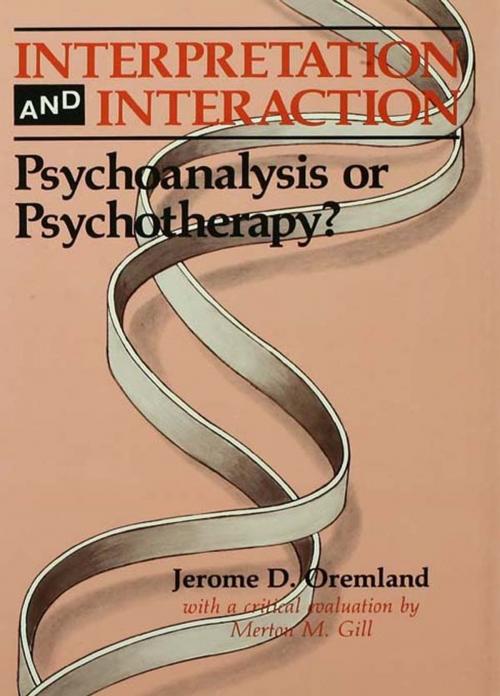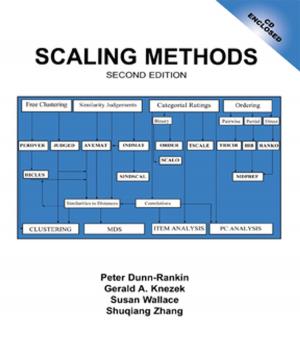Interpretation and Interaction
Psychoanalysis or Psychotherapy?
Nonfiction, Health & Well Being, Psychology, Psychotherapy, Interpersonal Relations, Mental Health| Author: | ISBN: | 9781134884179 | |
| Publisher: | Taylor and Francis | Publication: | May 13, 2013 |
| Imprint: | Routledge | Language: | English |
| Author: | |
| ISBN: | 9781134884179 |
| Publisher: | Taylor and Francis |
| Publication: | May 13, 2013 |
| Imprint: | Routledge |
| Language: | English |
In recent decades the relationship between psychoanalysis and psychotherapy has been a focal point for debate about the distinctiveness of analysis as a particular kind of therapeutic enterprise. In Interpretation and Interaction, Jerome Oremland invokes the interventions of "interpretation" and "interaction," rooted in the values of understanding and amelioration, respectively, as a conceptual basis for reappraising these important issues. In place of the commonly accepted triadic division among psychoanalysis, exploratory psychotherapy, and supportive psychotherapy, he proposes a new triad: psychoanalysis, psychoanalytically-oriented psychotherapy, and interactive psychotherapy. Anchoring his classification in what he terms the "orientation of the therapy" rather than the "orientation of the therapist," Oremland submits that analysis and psychoanalytically-oriented psychotherapy strive systematically to interpret the therapeutic interaction as expressed in the transference. Interactive psychotherapy, on the other hand, uses the transference selectively to ameliorate psychic stress.
Interpretation and Interaction is enriched by a concluding chapter from Merton Gill, a preeminent authority on the therapeutic process. Gill's critical appreciation of Oremland's proposals amounts to an illuminating refinement of his own position on the relationship between psychoanalysis and psychotherapy.
Scholarly in conception, thoughtful in tone, and pragmatic in yield, Interpretation and Interaction is a clarifying addition to the psychoanalytic theory of psychotherapy. It will have the practical consequence, in Gill's words, of "aiding clinicians in retaining their analytic identities and their analytic orientation across the spectrum of their therapeutic work."
In recent decades the relationship between psychoanalysis and psychotherapy has been a focal point for debate about the distinctiveness of analysis as a particular kind of therapeutic enterprise. In Interpretation and Interaction, Jerome Oremland invokes the interventions of "interpretation" and "interaction," rooted in the values of understanding and amelioration, respectively, as a conceptual basis for reappraising these important issues. In place of the commonly accepted triadic division among psychoanalysis, exploratory psychotherapy, and supportive psychotherapy, he proposes a new triad: psychoanalysis, psychoanalytically-oriented psychotherapy, and interactive psychotherapy. Anchoring his classification in what he terms the "orientation of the therapy" rather than the "orientation of the therapist," Oremland submits that analysis and psychoanalytically-oriented psychotherapy strive systematically to interpret the therapeutic interaction as expressed in the transference. Interactive psychotherapy, on the other hand, uses the transference selectively to ameliorate psychic stress.
Interpretation and Interaction is enriched by a concluding chapter from Merton Gill, a preeminent authority on the therapeutic process. Gill's critical appreciation of Oremland's proposals amounts to an illuminating refinement of his own position on the relationship between psychoanalysis and psychotherapy.
Scholarly in conception, thoughtful in tone, and pragmatic in yield, Interpretation and Interaction is a clarifying addition to the psychoanalytic theory of psychotherapy. It will have the practical consequence, in Gill's words, of "aiding clinicians in retaining their analytic identities and their analytic orientation across the spectrum of their therapeutic work."















